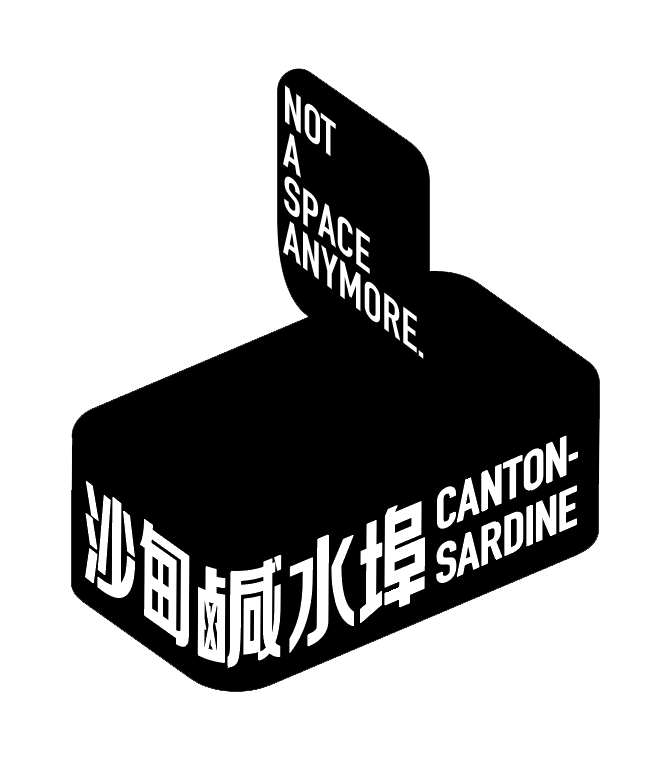
Duration: Sep 27 – Nov 27, 2019
Opening Reception: Sep 27, 2019, Friday at 5pm
Venue: Canton-sardine
Address: 268 Keefer street, #071 at Lower-ground (LG), Vancouver
Gallery hours: Tues-Sat 12-6pm
Artists: Amy Chang Li-chuan, Wei Cheng
Curator: Steven Dragonn
_
Immortal of Play – Amy Chang Li-chuan & Wei Cheng Ceramic Exhibition
Text / Steven Dragonn
As early as the Neolithic Age, humans have utilized ceramics as utensils of daily life. As humanity evolved and developed, ceramics as an art-form has prevailed long before the first definition of art endowed by humankind. In a way, our sensibilities towards ceramics are deeply rooted in our genes as humans: it’s inseparable from our diet, and it corresponds to our status and our positions in society. Generally speaking, ceramics is associated with functionality and practicality as everyday utensils, while its artistic quality an additional attribute. As civilization continues to advance, the distinctiveness of ceramics beyond its functionality gradually separates and becomes a unique art form, a vessel to a never-ceasing obsession.
How ceramics (or clay), as an art material and medium in artistic practices continue to evolve in contemporary art is an issue faced by every ceramic artist – how does an ancient art form generate new possibilities and necessities to contemporary social realities? In the same way as to how competitive sports evolved from life and death combat, the concept of “to play” has become a symbol of “civility” in human civilization. The two artists in this exhibition, Amy Chang Li-Chuan and Wei Cheng both attempt to break away from the ingrained concepts in ceramics differently, yet “to play” has become their shared strategy.
Amy Chang Li-Chuan’s work takes inspiration from Steampunk; a distinctive style and genre of the 1980s and 1990s North American subculture. From there, Chang develops her concept of imitation. Chang uses glaze to imitate metal textures, uses the hand-made quality of ceramics to mimic a lifeless industrialized production, and uses ceramics as functional utensils to mimic an impractical Steampunk assemblage. The three layers of imitation find peculiar connections between the practical and the useless, resemblance and non-resemblance, the seriousness and humorous, all of which makes up Chang’s art practice.
Wei Cheng’s works, on the other hand, attempts to break apart from the shackles of ceramic’s inherent qualities in a more radical way. From an institutional criticism viewpoint, Cheng emphasizes her reflections on the indispensable constituents of ceramics: “clay” and “fire.” The production of ceramics is the integration of “clay” and “fire”: clay to take the physical form, while fire the intervenient force that transforms clay into pottery. The properties of “fire” and “clay” have always been the two directions pushing forward ceramics to ultimate craftsmanship. Cheng, in contrary, adapts a playfulness to release the primitive nature of “clay” and “fire,” and merges ready-made objects with “clay” and “fire” to create assemblages, differentiating her work from both the context of ready-mades and ceramics.
In additions to the playfulness, the works from the two artists also speculate the subject of Anthropocene, a geological concept first introduced by Nobel Prize winner in Chemistry, Dutch atmospherical chemist Paul Crutzen in 2000. Crutzen proposed that the earth has moved past the Holocene, a geological epoch that began 11,700 years ago. The rapid growth in population and economic development had tremendous impacts on the global environment. Human activities have caused enough change to earth to create a new geological age. The industrialization of ceramics is precisely the most evidential manifestation of Anthropocene. Heaps of ceramic wastes are gradually changing the soil compositions of the earth’s surface, a change due to the scrupulous attention for high-standard products. To be concise (and not going into a whole other discussion on the art of the Anthropocene age), here is a question worth contemplating: Framing the discussion around the topic of Anthropocene, are the works of the two artists expressions of the uselessness of art, or instead, are they anti-entropian re-creations?
About the artists:
Amy Chang Li-chuan
Amy received a Bachelor of business in Taiwan before immigrating to Canada. By the time she moved to Vancouver she had already found her passion for art during her eight years working for the Cloisonné Company while studying ceramics in a private pottery studio. Amy then decided to go back to school to study art focusing on ceramics. She received a Diploma of Studio Art from Capilano University in 2003, then continuing on to complete her BFA from The Emily Carr University of Art and Design in 2007. Since then Amy has become a studio artist focusing on contemporary ceramic sculpture.
In recent years Amy has shown her work in solo and group exhibitions around Vancouver area and overseas. Amy’s work also has been selected into local and international ceramics competitions. Such as the 3 place award in 2018 Salt Spring national ceramics competition and 2019 International Ceramics Biennale, Taiwan.
Wei Cheng
Born and raised in China, Wei now lives and dedicates her art practice in Vancouver, BC. She earned her art education from Emily Carr University of Art and Design, where she learns to appreciate the ceramic medium. She has been a resident artist at Jingdezhen, Alfred and Yixing. Her professional practice has also taken her to States and Europe. Her work has been exhibited in solo and group exhibitions both national and international venues.
–
《玩心不改》
展覽時間:2019年9月27日至11月27日
開幕時間:2019年9月27日,週五下午5點-8點
展览地點:沙甸鹹水埠
展览地址:溫哥華 唐人街奇化街268號新華中心地下一層071單元
藝 術 家:張麗娟、成瑋
策 展 人:龍邃洋
玩心不改——張麗娟、成瑋陶藝作品展
文/龍邃洋
早在新石器時代,人類便開始使用陶作為生活的工具。伴隨人類的演化與發展,陶作為一種藝術,它的生成甚至比人類賦予藝術的定義還要早得多。我們對陶的感受可以說是深深地植根在我們人類的基因之中,因為首先它和我們的飲食密不可分,其次也與我們所在的社會地位互相匹配。具體而言,我們通常把陶與實用器皿關聯起來,藝術性則附於其上。隨著人類社會的不斷發展,留存在器皿之上的獨特性被逐步分離出來,形成陶所獨有的一種藝術形態,一種對永恆的迷思。
陶(或陶瓷),作為一種藝術的材料、或者是一種藝術創作的媒介,在當代藝術中如何繼續演化,是每一個陶藝工作者所面臨的問題——一種古老的藝術種類如何不斷產生與當代社會現實所需要的新的可能性。就如人類從你死我活的搏鬥中發展出互相比拼的體育競技,玩,成了現代人類文明之為“文明”的一種象徵。本展覽中的兩位藝術家張麗娟、成瑋則採用了不同的方式,去試圖擺脫陶的傳統物象(即人對陶的固有觀念),而“玩”則是她們的共通策略
張麗娟的作品靈感源自從二十世紀80-90年代北美流行風格蒸汽朋克(Steam punk)。並從中蛻變出一種“仿效”式的概念,她用陶的釉料去“仿效”金屬的質感,用陶的手作方式去“仿效”工業化冰冷的生產方式,用陶的實用器的形式去“仿效”無實用性的蒸汽朋克式造型拼貼。這三重的“仿效”在“有用”與“無用”之間,“似”與“非似”之間,“認真”與“開玩笑”之間尋求一種詭異的拼接,這就是她的藝術。
成瑋的作品則試圖通過更為極端的方式希望擺脫“陶性”的枷鎖,儼然一副制度批判的立場,她更強調對陶的基本元素“泥”與“火”的存在的反思。我們可以簡單地把陶的產生歸結成“泥”與“火”的結合,泥是物質形態,火則是催泥成陶的介入性力量。而泥性與火性一直是人類把陶瓷推向工藝極致的兩大研究方向,而瑋則反其道而行,用一種“玩”的態度去釋放“泥”與“火”的原始性,甚至把之於“非泥”、“非火”的現成品加之其上以進行拼接,拉出陶和現成品的反差。
觀之兩人的作品,除以“玩性”貫之外,其作品背後亦滲透出藝術家對於人類世(Anthropocene)的迷思——人類世是一個地質概念,最早由諾貝爾化學獎得主、荷蘭大氣化學家保羅·克魯岑(Paul Crutzen)於2000年提出。他認為,地球已告別11700年前開始的地質年代“全新世”,快速增長的人口和經濟發展對全球環境造成巨大影響,人類活動對地球的改變足以開創一個新的地質年代。陶瓷的工業化正正是人類世在地質學上最強有力的體現——早已堆積成山的陶瓷廢料正逐漸改變地球表面的土質成分,而這種改變正正是建立在人類對陶瓷產品吹毛求疵的特定要求之上。我不在這裡展開對人類紀藝術的探討,簡而言之,最後拋出一個問題給觀眾思考:在人類世的討論框架下,兩位藝術家的作品到底是一種“藝術無用主義”的表達呢,還是逆熵式的再創造?
關於藝術家
張麗娟
移居加拿大之前,張在台灣獲得了商業學士學位。 當她移居溫哥華時,她在景泰藍公司(CloisonnéCompany)工作的八年中,並在私人陶藝工作室學習陶瓷的時候,已經對藝術充滿了熱情。 然後,她決定回到學校學習以陶瓷為主的藝術。 她於2003年獲得卡皮拉諾大學(Capilano University)的工作室藝術文憑,然後於2007年繼續從艾米麗·卡爾藝術與設計大學(Emily Carr University of Art and Design)完成文學學士學位。此後,她成為專注於當代陶瓷雕塑的工作室藝術家。
近年來,Amy在溫哥華地區和海外各地的個人展覽和團體展覽中展示了她的作品。 艾米的作品還入選了本地和國際陶瓷比賽。 例如在2018年鹽泉國家陶瓷比賽和2019年台灣國際陶瓷雙年展中獲得三等獎。
成瑋
畢業於加拿大艾米麗卡爾藝術與設計大學。現為加拿大哥倫比亞省陶瓷協會會員,北美西海岸陶瓷雕塑協會會員,本拿比市陶瓷協會會員。
部分作品收藏機構有:愛爾蘭切斯特.比蒂圖書館、加拿大Peter Kiss畫廊、帕勞Hi Resort 酒店、哥倫比亞Campos de Gutiérrez畫廊等。
_






































